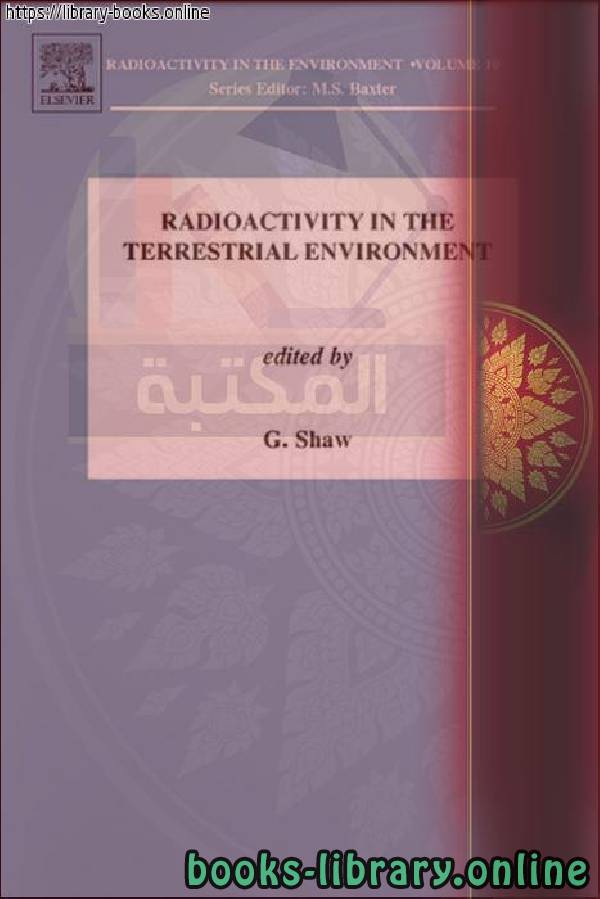📘 قراءة كتاب Radioactivity in the Environment Radioactivity in the Terrestrial Environment أونلاين


Biologically
Biology is a natural science that is concerned with the study of life, its various forms and its function, how these organisms interact with each other and with the surrounding environment. The word biology in Greek is made up of two words: bio (βίος) meaning life. And loggia (-λογία) means science or study. Biology: the similarity of vegetation and animal cover on the edges of the African and American states, and the existence of the same fossil.
Branches of biology
Biology is an ancient science thousands of years old and modern biology began in the nineteenth century. This science has multiple branches. Among them are:
Anatomy
Botany
Biochemia
Biogeography
Biofisia
Cytology or cell science
Ecology or environmental science
نبذه عن الكتاب:
Until relatively recently the environment was taken for granted as the satisfier of all mankind’s
needs, providing food, mineral and biological resources and a seemingly limitless facility for
the disposal of waste materials. Today, it is increasingly evident that the capacity of natural
systems to absorb the wastes and contaminants of modern human existence is limited. These
limits are both quantitative and qualitative. Some of our wastes are naturally occurring and
even essential substances, such as CO2, but are being produced in ever increasing quantities
which simply overload the capacity of biogeochemical systems to maintain the steady state
chemical compositions of the atmosphere, hydrosphere and lithosphere. Other substances are
produced in small quantities but are potentially so detrimental that their presence in the environment, even at low levels, is sufficient to cause concern. Prominent among this latter
category are radionuclides, some of which are natural components of the environment but
many of which are present largely as a result of man’s activities.
Widespread, low-level contamination of the environment from anthropogenic sources can
be traced back at least to Roman times, approximately 2000 years before present, when lead
and silver mining and smelting were carried out at several major sites across Europe (Rosman
et al., 1997). The environmental record for lead deposition is particularly revealing. In northern Scandinavia, for instance, Brannvall et al. (1999) have detected the presence of lead from
the Roman period but have also shown the beginnings of a steady increase in lead concentrations in lake sediments which can be traced back to 900 AD.
Biology
Human biology
Who is the founder of biology?
The importance of biology
Areas of work in the field of biology
Theories of biology
Research on biology for the first grade of secondary school
Human biology
سنة النشر : 2007م / 1428هـ .
حجم الكتاب عند التحميل : 3.29 .
نوع الكتاب : pdf.
عداد القراءة:
اذا اعجبك الكتاب فضلاً اضغط على أعجبني و يمكنك تحميله من هنا:

شكرًا لمساهمتكم
شكراً لمساهمتكم معنا في الإرتقاء بمستوى المكتبة ، يمكنكم االتبليغ عن اخطاء او سوء اختيار للكتب وتصنيفها ومحتواها ، أو كتاب يُمنع نشره ، او محمي بحقوق طبع ونشر ، فضلاً قم بالتبليغ عن الكتاب المُخالف:
 قبل تحميل الكتاب ..
قبل تحميل الكتاب ..
يجب ان يتوفر لديكم برنامج تشغيل وقراءة ملفات pdf
يمكن تحميلة من هنا 'http://get.adobe.com/reader/'


 منصّة المكتبة
منصّة المكتبة 